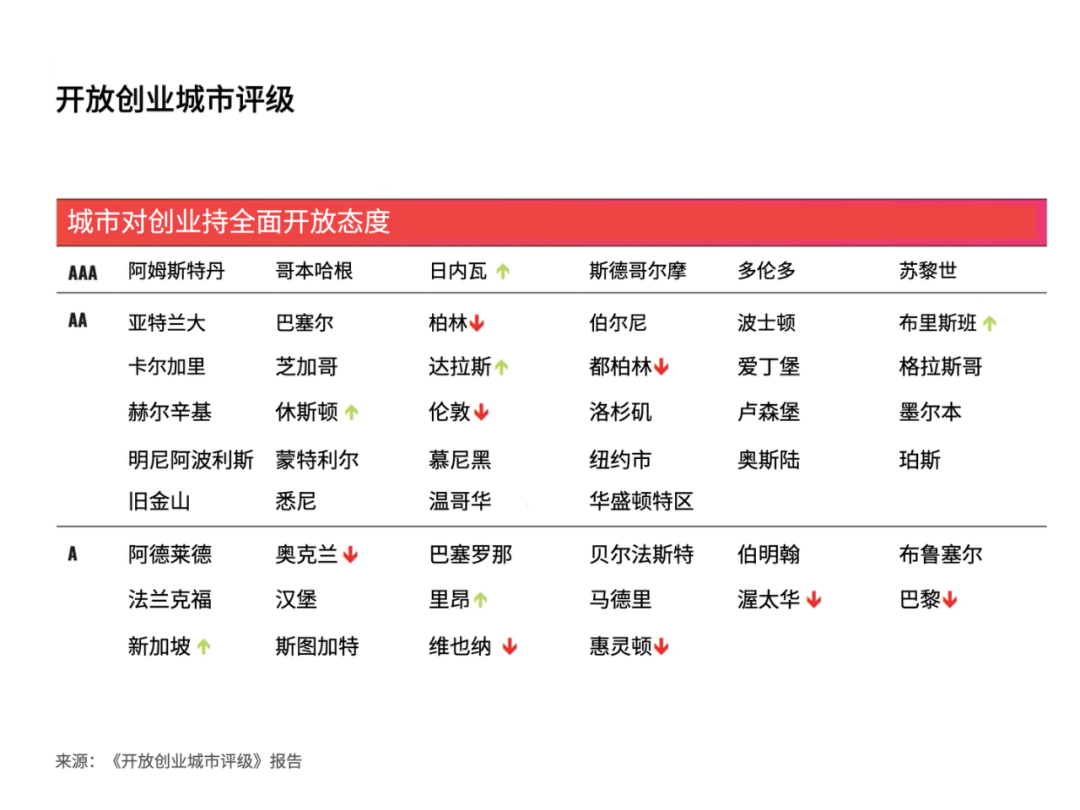

Inclusive cities are more productive and also more successful.
Image source: Unsplash/Florian Wehde
Silja Baller
Global Head of Equity, Diversity, and Inclusion at the World Economic Forum
Fernando Alonso Perez-Chao
Global Head of Business Engagement
The "Open Entrepreneurial Cities Ranking" report covers 149 cities across three continents. The data shows that inclusivity can give cities a competitive edge.
In terms of human capital, innovation, and entrepreneurship, inclusive cities have consistently outperformed others.
For city leaders navigating economic uncertainty and technological challenges, the path forward demands integrating inclusivity into the core of their economic development strategies.
In today’s interconnected world, cities are the cornerstone of global economic growth, contributing more than 60% of global GDP. The "Chief Economist Outlook," released by the World Economic Forum in May 2025, highlights that economic volatility is intensifying at an unprecedented pace. Against this backdrop, cities now face a critical question: how can they strengthen urban resilience in an era marked by ongoing instability?
One of the answers lies in an often-overlooked yet critical driver of economic resilience: inclusivity.
Inclusivity is a competitive advantage.
The "Open Entrepreneurial Cities Ranking" report covers 149 cities across three continents. Its latest findings reveal that inclusivity is not just a social good—it also serves as a competitive advantage.

City inclusivity isn’t just a social good—it’s also a competitive advantage.
Image source: "Open Entrepreneurial Cities Ranking" report
In terms of human capital, innovation, and entrepreneurship, inclusive cities have consistently outperformed others.
Human capital delivers a competitive advantage:Cities ranked in the top 25% for LGBTQ+ inclusivity demonstrate human capital performance four times stronger than those in the bottom 25%. These top-performing cities excel across key areas such as quality of life, attractiveness to college students, educational achievements, and the concentration of leading institutions.
Innovation and entrepreneurship thrive in an inclusive environment:Cities with high inclusivity score twice as high on innovation metrics compared to other cities, and their scores for entrepreneurial spirit are 2.5 times higher. This fosters a vibrant ecosystem where diverse perspectives spark groundbreaking ideas and drive the creation of new businesses.
Inclusivity as a Talent Strategy:By 2030, the global economy is expected to create 170 million new jobs, while 22% of existing roles will be impacted—and 39% of core skills will undergo significant changes. In this context, LGBTQ+-inclusive cities will be better positioned to attract and retain the diverse talent needed to drive this transformative shift.
Turning technological challenges into opportunities
To ensure these benefits, leaders need to anticipate which emerging trends will impact underrepresented groups.
Artificial intelligence is reshaping the economic landscape and could potentially widen existing disparities in labor market outcomes. For instance, women remain underrepresented in STEM (science, technology, engineering, and mathematics) roles, with their share of STEM leadership positions continuing to decline—a trend that may be exacerbated by the rise of generative AI (GenAI). In the STEM sector, the "drop-to-the-top" phenomenon—where women are disproportionately absent from top management and senior leadership roles—is particularly pronounced. Currently, women make up less than 30% of entry-level STEM jobs, while their representation plummets to just 12% at the highest executive levels, highlighting a significant loss of female talent as careers progress. Meanwhile, the rapid adoption of generative AI is intensifying existing occupational segregation: today, 33.7% of jobs held by women are being disrupted, compared to 25.5% for men. At the same time, only 20.5% of women’s roles are set to grow, whereas men see growth in 24.1% of their jobs.
As cities grapple with the dual impact of AI—both its potential to drive significant GDP growth and its risk of displacing jobs or reshaping social hierarchies—these insights take on particular relevance. In this context, maximizing the unleashing of human potential has become more critical than ever.
The Virtuous Cycle and Its Risks
The 2025 "Open Entrepreneurial Cities Ranking" data reveals a mutually reinforcing dynamic: highly inclusive cities attract diverse talent and foster innovation, driving stronger economic performance. This enhanced status enables them to further invest in inclusive policies, creating a positive feedback loop that builds competitive advantages over time.
However, this virtuous cycle also carries the risk of widening disparities. As inclusive cities tend to perform better economically, regions with lower levels of inclusivity may experience relative economic decline, potentially making it even harder to foster greater inclusivity. The gap between inclusive and non-inclusive urban areas could become self-reinforcing, ultimately leading to economic success being concentrated in cities that embrace diversity.
During periods of structural change, this divide may pose specific risks. For instance, while the LGBTQ+ community has made significant progress toward equality in recent years, it could inadvertently become a target when others feel threatened by these shifts. Such dynamics might precisely make inclusivity even more challenging to achieve—just when it’s most critical for economic success.
Strategic priorities for city leaders
Considering that 17% of Gen Z adults identify as LGBTQ+, cities that fail to embrace inclusivity risk losing an entire generation of employees, consumers, and innovators. Recent surveys reveal that job seekers are increasingly drawn to companies where they can authentically be themselves, while younger professionals, in particular, view LGBTQ+ inclusivity as a key indicator of broader societal values and overall quality of life.
For city leaders navigating economic uncertainty and technological challenges, the path forward demands embedding inclusivity at the heart of their economic development strategies. This means shifting from viewing diversity as a societal goal to recognizing it as a strategic economic driver essential for achieving long-term prosperity.
As our economy faces unprecedented challenges—ranging from trade tensions and technological disruption to skill shortages and competitive pressures—cities can no longer afford to waste human potential. Data clearly show that inclusive cities not only foster better societies but also build more resilient, innovative, and prosperous economies.

The above content solely represents the author's personal views.This article is translated from the World Economic Forum's Agenda blog; the Chinese version is for reference purposes only.Feel free to share this in your WeChat Moments; for reprints, please leave a message at the end of the article or in our official account.
Translated by: Di Chenjing | Edited by: Wang Can
The World Economic Forum is an independent and neutral platform dedicated to bringing together diverse perspectives to discuss critical global, regional, and industry-specific issues.
Follow us on Weibo, WeChat Video Channels, Douyin, and Xiaohongshu!
"World Economic Forum"


